If you are travelling in the central coastal region of British Columbia and think you may have seen a ghost, you’re probably right. You blink your eyes just to make sure, but you are now certain you see a large, pure white, slow moving figure emerge from the foggy rainforest. You hold your breath. Aside from the gentle lullaby of flowing water from the river mouth, it is silent. Mesmerized, watching, whispering, you sit motionless with your companions in the boat you are floating in. The ripples glisten around the hull as you slowly raise your camera and your guide confirms it is Ursus americanus kermodei or Kermode Bear. These are the Ghost Bears or Spirit Bears of British Columbia.
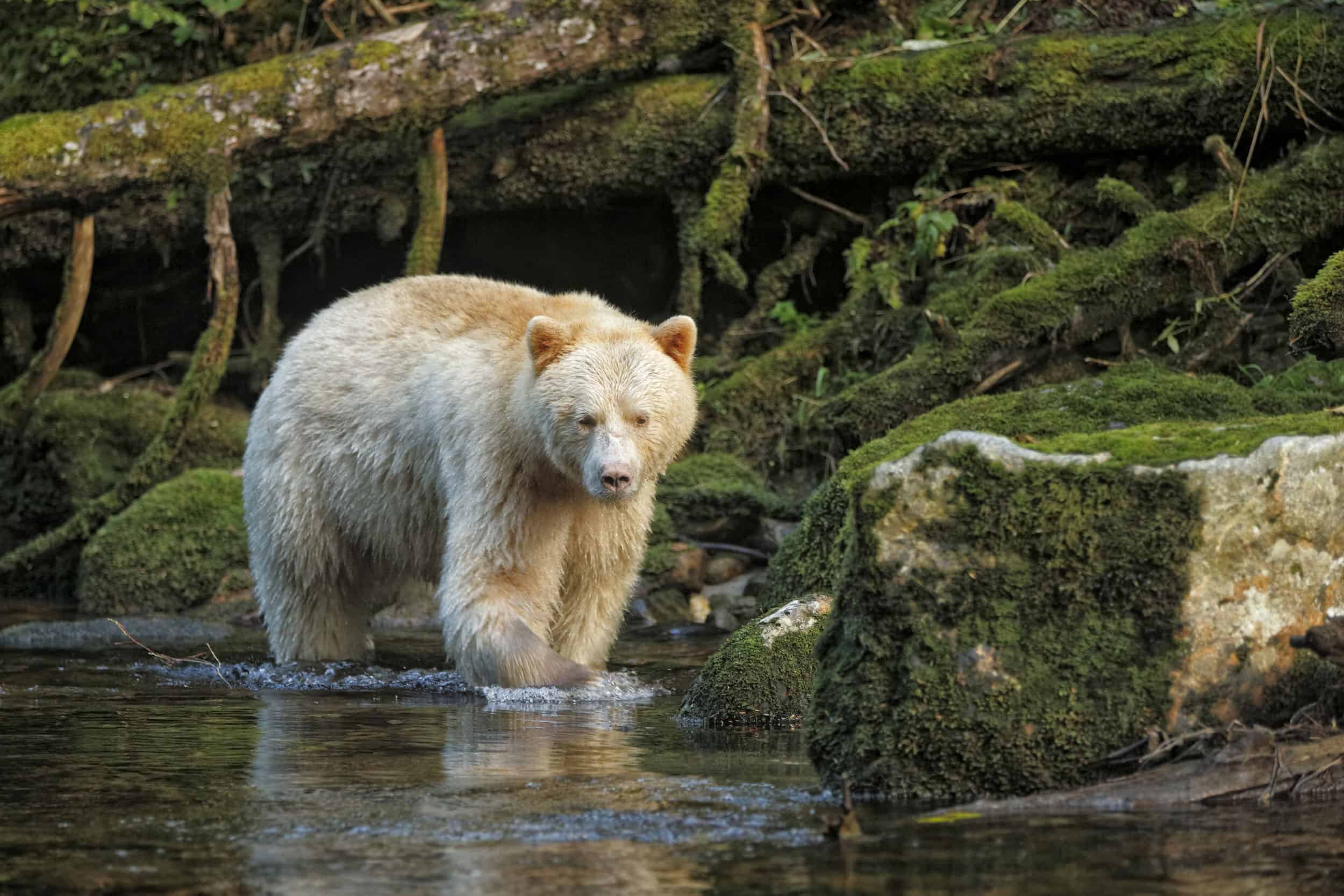
A Fantastic Anomaly of Nature
The Spirit Bear is a fantastic anomaly of nature. This bear, although you may think it resembles a polar bear, is in fact a subspecies of the American black bear. However, it is not an albino bear either, since it has a black or brown nose and paws and pigmented skin and eyes.
The Spirit Bear carries a recessive gene, which causes two black bear parents to have pure white offspring. And just when you thought we were making this all up – this Spirit Bear lives only in the Great Bear Rainforest on the central coast of British Columbia. Yes, it’s all true and you read it here first. We have true ghosts and spirits in British Columbia, but they’re pretty cuddly and cute looking. To top it all off, we believe in the Spirit Bear so much, that it became our official provincial mammal in 2006.
Dominant and Recessive Genes
.A quick biology refresher may be in order here. Living organisms have dominant and recessive genes. It’s pretty self explanatory that a dominant gene would be the one inherited or passed on to your offspring. Recessive genes are normally overridden by the dominant genes.
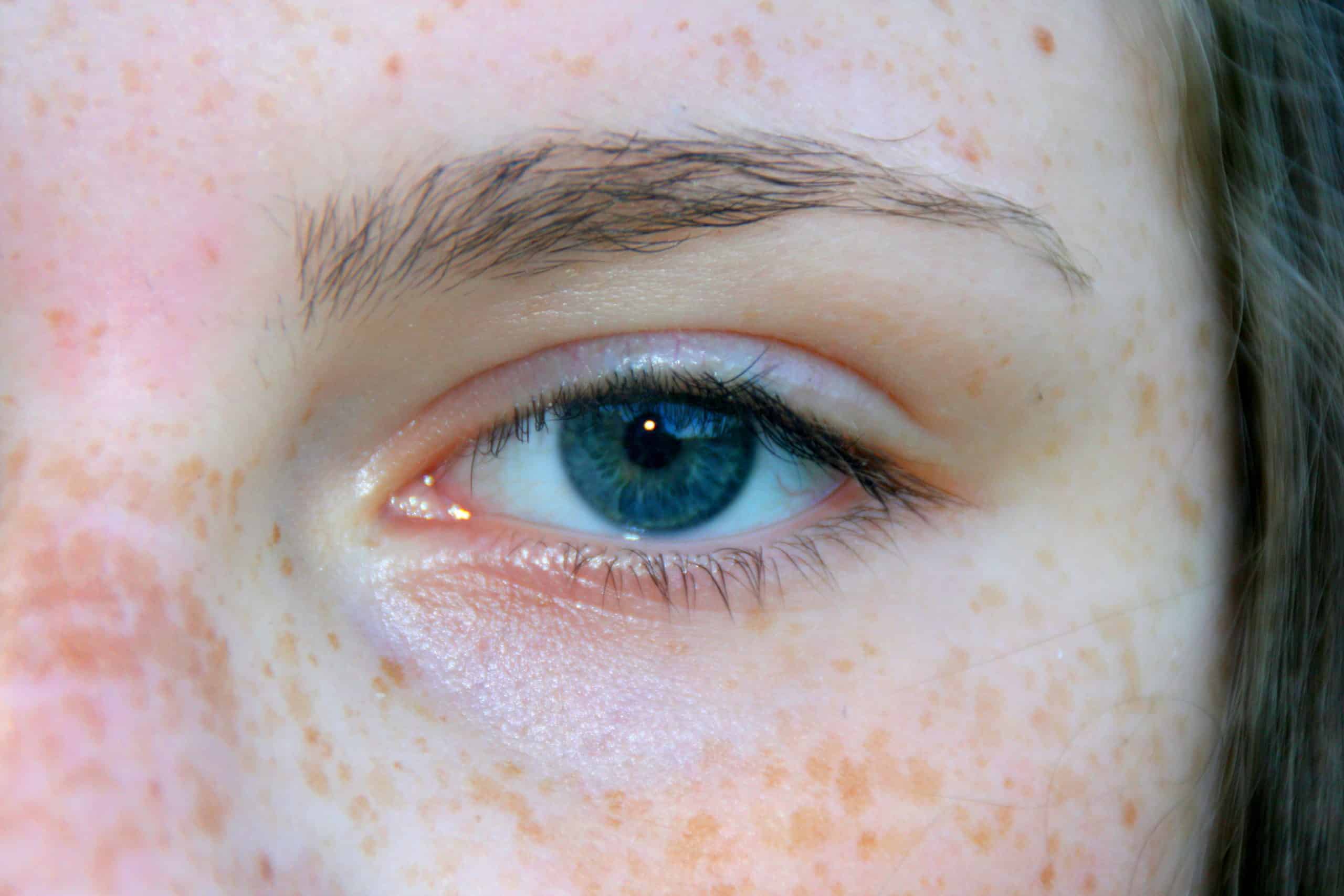
The anomaly happens when both parents have a recessive gene for a particular trait. So, for example, when both parents have the recessive genes for blue eyes or red hair, then their child will have blue eyes or red hair, instead of the dominant brown eyes or brown hair. In the case of the Kermode Bear, both black bear parents have the recessive gene for white fur and therefore pass that along to their offspring. And then out pops another cute and cuddly white black bear.
The Great Bear Rainforest
The Great Bear Rainforest region was named in 1997 and encompasses 6.4 million hectares (15.8 million acres) on the central and north coast of British Columbia. It is about the size of Ireland! This is a wild, jagged coastline with numerous inland waterways. Despite the ruggedness, it is home to a vast ecosystem of plant, animal and marine life and 26 First Nations communities.

In fact, 66% of British Columbia’s mammals and 75% of the freshwater fish live in the lakes, rivers and wetlands. The Great Bear Rainforest is one of the largest unspoiled tracts of temperate rainforest left in the world. It is a truly special place and well deserving of a truly special species of bear.
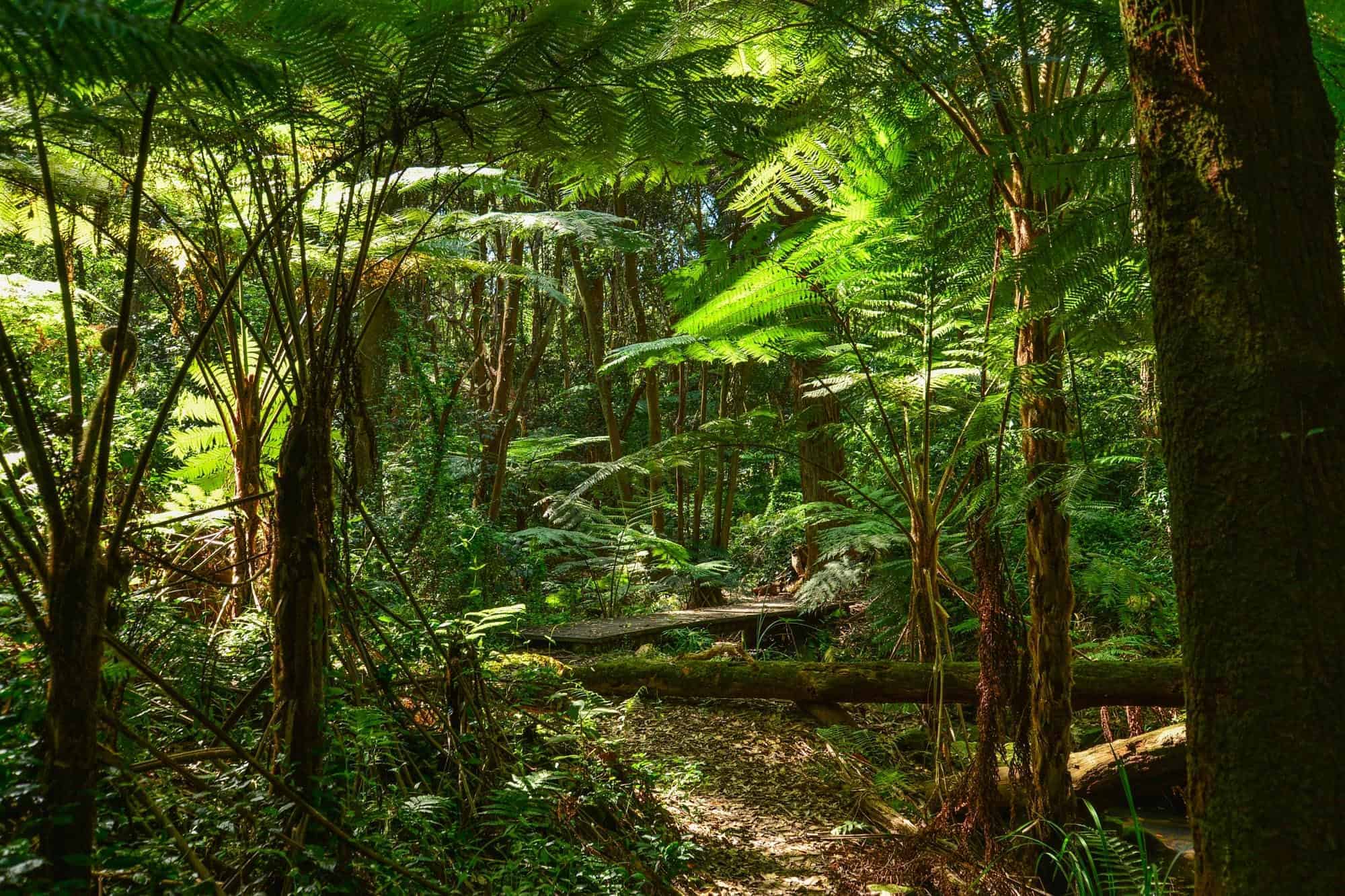
Francis Kermode
The Spirit Bear was named after Francis Kermode in 1905, the first Curator and Director of the Royal B.C. Museum. Kermode was involved in researching the bears and helped lead zoologists to find them in their habitat. Of course, as with all things “discovered”, the First Nations communities in the region knew about the Spirit Bears long before this, as they have lived in the area for thousands of years.
Moksgm’ol
The First Nations communities that dot this vast geography have a special reverence for the Spirit Bear. The Kitasoo call it “Moksgm’ol”, which simply means “white bear”. They believe Moksgm’ol has supernatural powers and that it can make itself invisible. Well, that’s not such a long shot, as researchers have discovered that the Spirit Bear is 30% better at catching salmon than its black coated relatives. They have concluded that the white fur makes them less visible to the salmon they are stalking, as they have less contrast against the sky.
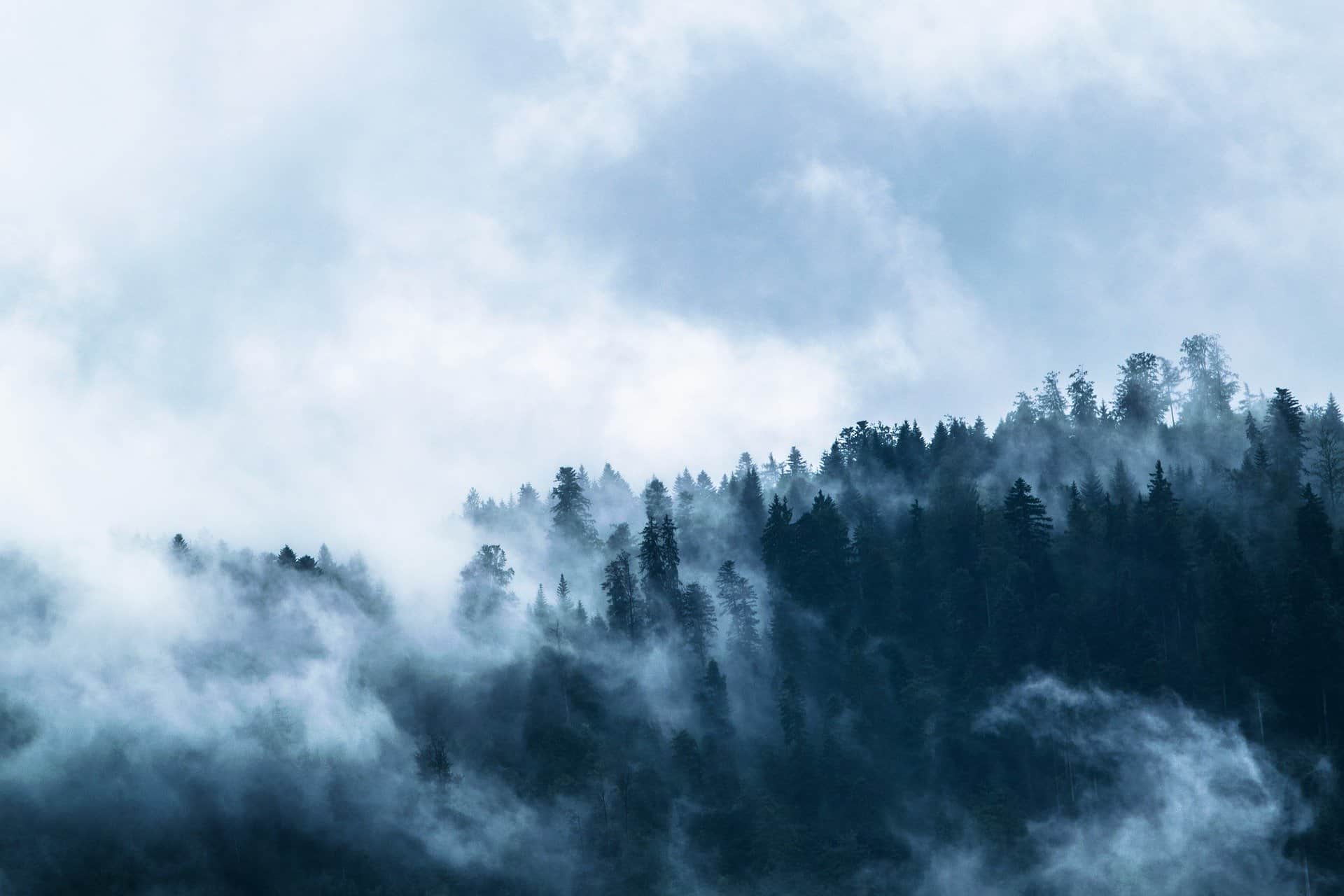
Origins of the Spirit Bear
Extensive research by teams at the University of British Columbia seem to indicate that the likely origins of the Spirit Bear stem from the last ice age. During that time, when glaciers covered the Pacific Northwest, some black bears may have been cut off from the rest of their population. After the glaciers melted and sea levels rose, they may have been cut off again and stranded on some of the islands of the Great Bear Rainforest region. The resulting in-breeding within a smaller population of bears, allowed the gene mutation for white fur to become more prominent.
Gribbell Island and Princess Royal Island do indeed have a disproportionately larger Spirit Bear population. “Larger” is a relative term, however, as researchers estimate that the total population of Spirit Bears in British Columbia may only be about 400 individuals. It is estimated that Gribbell Island (with a land area of only about 200 sq km or 80sq miles) has about 7 Spirit Bears. Princess Royal Island (2251 sq km or 869 sq mi) has about 50 or 60. Consider also, that a black bears’ typical range is about 130 sq km or 50 sq mi for females and up to 780 sq km or 300 sq mi for males.
Great Bear Rainforest Agreement
Although the Great Bear Rainforest was named in 1997, it took several decades to truly build the proper protections through government and organizational support to arrive at the Great Bear Rainforest Agreement. In 2006, after much lobbying by environmental groups, ecologists, researchers, First Nations communities, and forestry companies, all the stakeholders finally agreed on this comprehensive protection plan.
The first agreement was designed to protect 33% of the Great Bear area. Many believed this was far too little. Many wanted more of this sensitive, wild ecosystem to be protected from logging, tanker traffic and hunting. As a result, over the years, more land and more marine habitat within the zone has been successfully added to the protection plan. As of 2016, about 85% of the Great Bear Rainforest is protected under the Agreement.
The Hakai Institute and Ecotourism
Take a peek at the rugged and spectacular coastline of the Great Bear Rainforest with the webcams set up by the Hakai Institute from their research stations in the region (click on the “Take the Video Tour” button). From the top of a glacier to the incredible kelp forests in the Pacific Ocean (glorious!), the Great Bear Rainforest is our national treasure.
And if you are sufficiently adventurous to go ghost hunting yourself, you will be happy to know that there are many opportunities for ecotourism in the area. And yes, these include tours for gliding silently in a boat along the shoreline with your camera poised, ready to snap a picture of your very own Moksgm’ol.
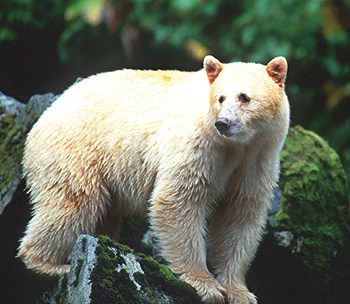
Learning Resources
Lesson Planning
Not only is the Spirit Bear a fascinating quirk of nature, but its story provides equally rich and diverse content for all levels of education from Pre-K and early learners to elementary students. Adding information about a beautiful, rare bear subspecies can give a mammals or bear unit study some serious intrigue and interest. Not to mention how easily so many subject areas from STEM, geography, language and the arts can be covered in one fell swoop.
Montessori Resources
Be sure to check out our Montessori bear nomenclature puzzle in the shop now. It’s part of the Puzzle Heads Limited Edition Series and was developed in collaboration with a school board in Alaska. For Montessori educators, this puzzle is a perfect match for your continent shelves. We’re also working hard putting together our very own bear learning nomenclature and activities bundle available soon. If you would like to be notified when it is available please contact us!
In the meantime, check out our Pinterest bear books and activities resources. You may also like the wonderful bear book selections from Marnie at Carrots are Orange, which she curated for 3-8 year olds.
Wildlife Rescue and Rehabilitation
It can be scary to encounter a bear in the wild, but rescue organisations and rehabilitation centres do amazing work providing homes for orphaned animals and educating the public. For example, the North Island Wildlife Recovery Centre rehabilitates orphaned bears on Vancouver Island. The centre currently provides a home for resident black bears Knut and Rae, who also star in their education programs.
We also love Coola and Grinder at the Wildlife Refuge at Grouse Mountain in Vancouver, BC. Both grizzly bears were orphaned as cubs and have been cared for at the mountaintop refuge since 2001. Coola loves to soak in the pond and play with his log toys.
Do you have any rescue centres or rehabilitation organisations in your community giving wildlife a little helping hand? Pop your links in the comments!


